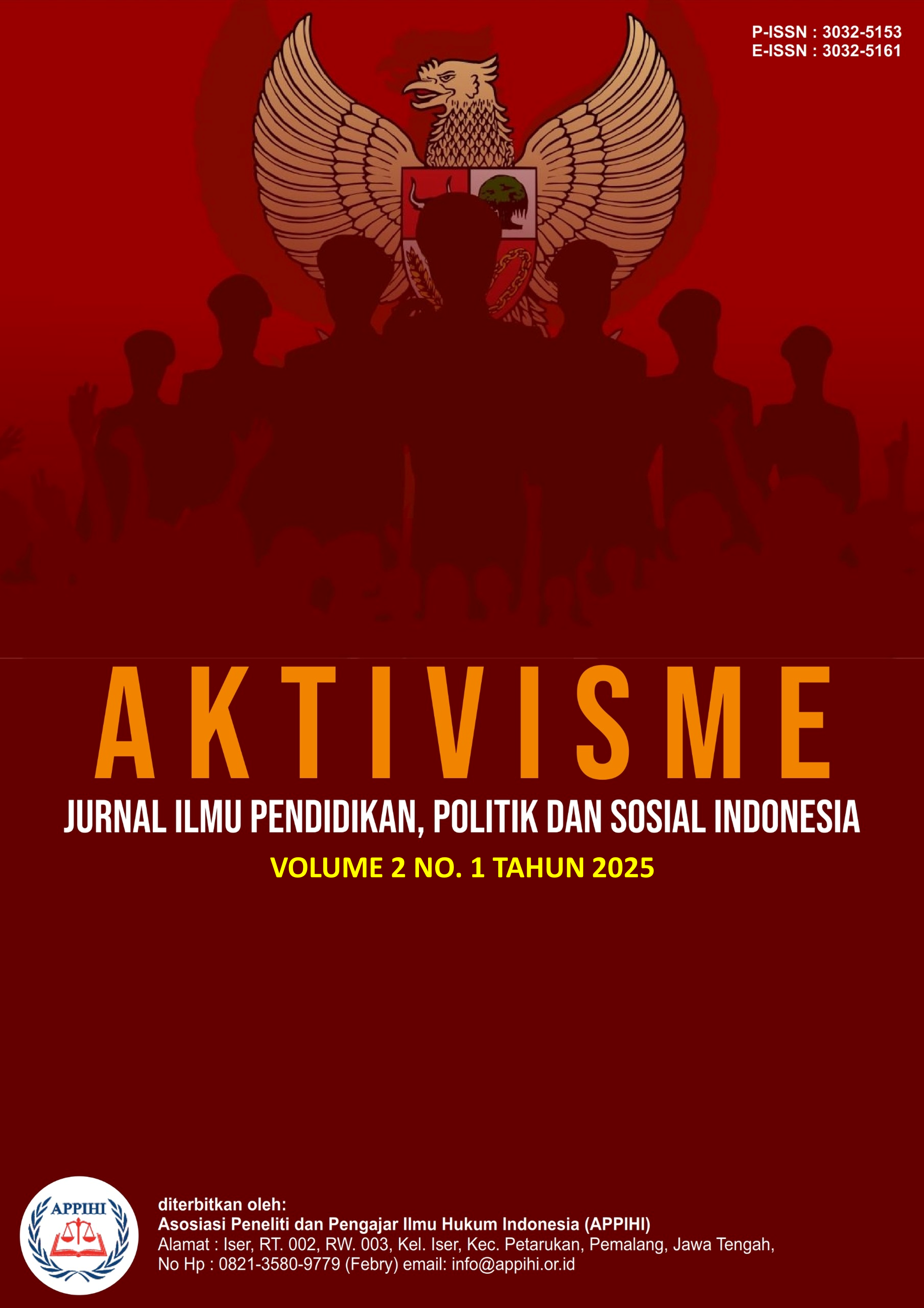Narasi “Lelaki Tidak Bercerita” dalam Sudut Pandang Maskulinitas Hegemonik
DOI:
https://doi.org/10.62383/aktivisme.v2i3.1114Keywords:
emotional expression, gender socialization, masculinity, social mediaAbstract
This study aims to examine how the narrative of “lelaki tidak bercerita” is reproduced and internalized by young men through their personal experiences in family, friendship, and social media. Using a descriptive qualitative approach, the research involved four male students from Pendidikan Sosiologi, Universitas Negeri Jakarta as key informants. The findings show that hegemonic masculinity shapes men to suppress emotional expression from an early age, mainly through unspoken family norms and socially unsupportive relationships. While friendships and social media sometimes offer more fluid spaces, dominant narratives still restrict men’s vulnerability. Social media acts as a space for passive emotional validation, yet often reinforces old stereotypes. The impact of this construction is evident in hidden psychological burdens, emotional distraction, and indirect coping strategies. This study highlights the importance of creating inclusive and supportive social spaces where men can express emotions without stigma. By critically understanding the dynamics of hegemonic masculinity, society is encouraged to foster more empathetic and equitable social relations.
Downloads
References
Alimi, M. Y. (2004). Dekonstruksi seksualitas poskolonial: Dari wacana bangsa hingga wacana agama. Yogyakarta: LKiS.
Connell, R. W. (1995). Masculinities. California: University of California Press.
Connell, R. W. (2005). Masculinities (2nd ed.). Berkeley: University of California Press.
Fernandez, M. R. (2024, November 24). Mengapa laki-laki tidak bercerita? Dampak budaya patriarki terhadap cara meregulasi emosi. Narasi. https://narasi.tv/read/narasi-daily/kenapa-laki-laki-tidak-bercerita
Hamid, R. Z., Agustang, A., & Idrus, I. I. (2024). Gender: Menelaah keadilan dan kesetaraan dalam perspektif antropologi. Journal Peqguruang: Conference Series, 5(1), 243–261.
Jambi Independent. (2024, November 29). Laki-laki tidak bercerita: Toxic masculinity atau hegemonic masculinity. https://jambiindependent.disway.id/read/695109/laki-laki-tidak-bercerita-toxic-masculinity-atau-hegemonic-masculinity
Kartika, K., & Iqbal, M. (2023). Toxic masculinity di TikTok. Aksiologi: Jurnal Pendidikan dan Ilmu Sosial, 4(1), 48–62.
Mulyana, A. A. (2024, Desember 25). Hegemonic masculinity: Konstruksi masyarakat terhadap bentuk ideal laki-laki. Kompasiana. https://www.kompasiana.com/adimasagungmulyana1735/676be096c925c42f1657a5a2/hegemonic-masculinity-konstruksi-masyarakat-terhadap-bentuk-ideal-laki-laki
Parentalk. (2023). Kenapa laki-laki tidak bercerita. https://parentalk.id/kenapa-laki-laki-tidak-bercerita/
Prabowo, G. A., & Fitriani, N. E. (2024). Contemporary shifting of masculinity concept in advertising. Komunika: Jurnal Dakwah dan Komunikasi, 18(24), 159–176.
Rasyida, A. (2019). Faktor yang menjadi hambatan untuk mencari bantuan psikologis formal di kalangan mahasiswa. Persona: Jurnal Psikologi Indonesia, 8(2), 194–205.
Suprapto, D. (2018). Representasi maskulinitas hegemonik dalam iklan. Jurnal Penelitian dan Pengembangan Sains dan Humaniora, 2(1), 1–11.
Tempo. (2021, Juni 30). Mengenal toxic masculinity: Laki-laki tidak boleh menangis? Tempo. https://www.tempo.co/gaya-hidup/mengenal-toxic-masculinity-laki-laki-tidak-boleh-menangis--499178
Wandi, G. (2015). Rekonstruksi maskulinitas: Menguak peran laki-laki dalam perjuangan kesetaraan gender. Kafaah: Journal of Gender Studies, 5(2), 239–255.
Wardani, A. N. (2018). Hegemoni maskulinitas dalam Under the Greenwood Tree karya Thomas Hardy. Satwika: Kajian Ilmu Budaya dan Perubahan Sosial, 2(2), 68–78.
World Health Organization. (2021). Suicide worldwide in 2019: Global health estimates. https://www.who.int/publications/i/item/9789240026643
Downloads
Published
How to Cite
Issue
Section
License
Copyright (c) 2025 Aktivisme: Jurnal Ilmu Pendidikan, Politik dan Sosial Indonesia

This work is licensed under a Creative Commons Attribution-ShareAlike 4.0 International License.





